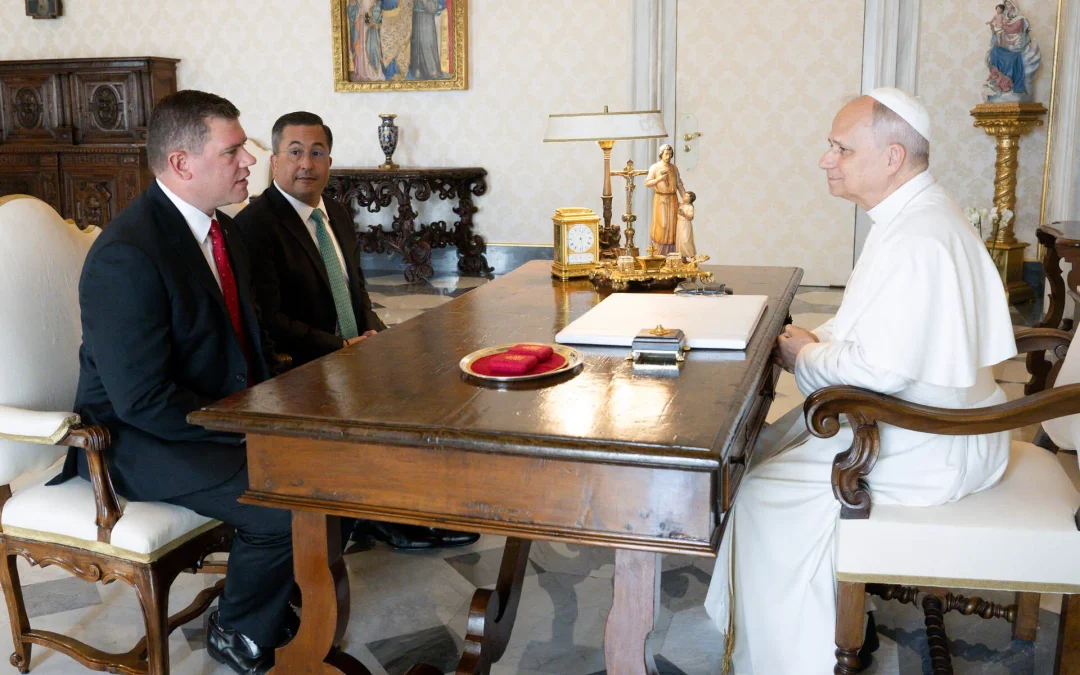An excerpt from Eight Promises of God: Discovering Hope Through the Beatitudes
What moves us and troubles us? What do we mourn? Let us reflect whether we mourn sin and its effects in the world. First of all, let’s look at sin. Our own personal sin and corporate sin is a worthy cause of mourning—of contrition. But we need to follow the example of Jesus, and so we need to avoid the temptation to self-isolation and hiding before our sinfulness. As we see it, as we’re hurt by it, as we feel contrition, we need to be moved to bring it with cries for mercy and repentance to our merciful Father. We bring it to him knowing that he sees us, he always hears us, and he has the power to deliver us from any chains of sinfulness and also to bestow upon us his healing mercy.
Mourning Our Personal, Individual, And Corporate Sinfulness
This is the first invitation of the beatitude “Blessed are those who mourn”: to mourn our personal, individual, and corporate sinfulness, but to do so by bringing it to God with cries for deliverance, for healing, for repentance, and for mercy, because he can return us to life.
To illustrate a healthy relationship of a person to his own sin, it has become quite popular to contrast the responses of Peter and Judas to their sins during the Lord’s Passion. When reflecting upon our fallenness, we need vigilance and discernment to keep out the Accuser. The Accuser is one of the scriptural names given to Satan. When the Accuser shows us our sin or tries to speak to us while we are seeing our sinfulness, his voice will try to define us by that sin, will bombard us with shame, and will attempt to sow despair by lying to us and saying that we are hopeless. He will try to tell us that we are too broken for God, that it is too late to do anything about our mistakes, and that we should give up. We must know that these are lies from Satan. These were the lies that caused Judas to despair in the face of his betrayal of Jesus and then to take his own life. Judas could have returned with contrition to Jesus, but the Accuser hid from him the Light of Hope that we always have in Jesus. Judas embraced the darkness.
The Holy Spirit will remind us of the reality of sin and its consequence, but the Holy Spirit will also remind us of our truest identity and measure of our worth, being loved by the Father. In fact, the Holy Spirit will quickly not make it about us at all but make it about our Father. The hope we have is not in our strength but in the Father’s goodness and the Father’s never-ending mercy. This God-led contrition and mourning of our sins causes us to run with all haste and confidence to the Father, begging for his mercy and placing all our hope in him. This is what we see in Peter. Peter returned to the Lord without hesitation. In the Gospel of John, we read that when Peter recognized Jesus on the shore, even though he had denied him three times when Jesus needed him the most, Peter dove into the water to reach Jesus (see John 21:7–8). This is the fruit of reflecting upon our sins in right relationship to God. We mourn our sins because of their offense against his goodness, but we also respond by throwing ourselves upon his mercy. It is the fullness of his return to Jesus that made Peter into St. Peter, a man of blessedness.
Another beautiful example of this is found in Psalm 51. King David committed a great sin in committing adultery and having the husband of his mistress killed in battle. There is no minimizing the great harm of this sin. David, however, knew the Lord. He knew of God’s mercy, and he repented with all his heart. Through his journey of repentance, David eventually gave to us one of the most beautiful prayers and models of repentance in Psalm 51. It is an appeal for mercy. It places confidence in God’s ability to make right what has been made wrong. And it places God, not man’s fallenness, back at the middle of the narrative. It is for this reason that confessors often offer the praying of Psalm 51 as a penance, and I recommend that Christians take the time to actually memorize this psalm.
Do We Mourn The Effects Of Sin In The World?
Second, do we mourn the effects of sin in the world? These include death, sickness, and the varieties of loss. These losses do not include the experience of not having everything we want, the way we want it, and when we want it. So, there is space for examining our hearts and seeing if we are mourning the wrong things. If our mourning is self-motivated or selfish, it does not have the promise of God’s comfort and the promise of blessedness. If that is our case, let’s cry out for the grace to repent and to move to a more authentic Christ-like mourning.
But in the face of the many experiences of loss, sickness, and pain, there is plenty for us to mourn, and the temptation will be to mourn this alone—to mourn this in despair and isolation. Yet we are not blessed just if we mourn; instead, we are blessed if we mourn like Jesus. And again, how does Jesus mourn? He mourns in relationship with his Father. So we bring the pain, the cries, and the sorrow to our heavenly Father, knowing that he always hears us, knowing that he is with us, knowing that he has power over death. Our comfort will be the hope of the Resurrection. Our comfort will be the promise and the truth that at the end of time, every tear will be wiped away. But also, we are comforted by the fact that even now we are not alone but he is with us in it.
In this way, we see also one expression of the priesthood of all the baptized. Jesus is the High Priest, who brings the world’s suffering to the Father and keeps all of humanity before the Father with his own prayers and cries. Similarly, in the face of our sinfulness, the sinfulness of the world, and the varieties of sufferings that we experience, including death, we are to keep humanity before God with our own prayer and with our own authentic mourning, sharing in Jesus’ priesthood.
But let us remember that the Beatitudes are promises and that mourning does not have the last word. Let’s avoid the temptation to place a period where God has placed a comma even before the tomb. Jesus is the resurrection, and even death does not have the final word. If we remain in relationship with him, we who die with him and who mourn with him will surely be comforted by him and rise with him.
THE BLESSED MOTHER’S EXAMPLE
Simeon blessed them and said to Mary his mother, “Behold, this child is set for the fall and rising of many in Israel, and for a sign that is spoken against (and a sword will pierce through your own soul also), that thoughts out of many hearts may be revealed.” (Luke 2:34–35)
Standing by the cross of Jesus were his mother, and his mother’s sister, Mary the wife of Clopas, and Mary Magdalene. When Jesus saw his mother, and the disciple whom he loved standing near, he said to his mother, “Woman, behold, your son!” Then he said to the disciple, “Behold, your mother!” And from that hour the disciple took her to his own home. (John 19:25–26)
It is difficult to hypothesize what Mary’s internal experience and thoughts would have been after she conceived Jesus in her womb by the Holy Spirit. What we do know is that she and Joseph presented him in the Temple, and she heard the words of Simeon: that the child would be a sign of contradiction and that her own heart would be pierced.
Did this confirm something she already knew? Was this a new surprising revelation of what it would mean to be the mother of the Savior?
But surely, as the piercing of her heart was prophesied, the sword would begin to press upon her already as she knew that her son would suffer and that in the suffering of her son, she would suffer as well. And this sword that began its descent into the heart of Mary there at the presentation in the Temple would be fully plunged as she stood before her crucified son.
We can only scratch the surface of the suffering, the mourning, and the grieving of the Blessed Mother as she contemplated her crucified son, her scourged son, her son crowned with thorns, put to death by the very ones he came to save. How deep and intense was the suffering and the mourning of the Blessed Mother, and yet she remained true. She remained faithful, and she remained in relationship.
The Fiat that she offered to the angel Gabriel she did not now take back. Instead she remained open, receptive, and painfully rooted in the promise that for God all things are possible.
Certainly, Mary was comforted by the grace of the Holy Spirit at work in her, the Holy Spirit who kept her strong and faithful and true. And so she would wait, and she would pray with faith for the three days that Jesus was in the tomb, comforted by promise, by hope, and by the Holy Spirit working in her life. Perhaps she was even comforted by the disciples, who waited and prayed with her.
And then on the third day, her beloved son rose from the dead. We don’t have the exact description of the moment when Mary encountered her merciful son, but as we can only scratch the surface of the pain and the mourning she experienced, truly we can only scratch the surface of the joy and the comfort she experienced as the mother embracing her now risen son. Truly she who believed that what was promised would be fulfilled remained blessed, even as she mourned at the foot of the Cross.
She prayed in the Magnificat:
“My soul magnifies the Lord,
and my spirit rejoices in God my Savior …
He has helped his servant Israel,
in remembrance of his mercy,
as he spoke to our fathers,
to Abraham and to his posterity for ever.” (Luke 1:46–47, 54–55)
May the Blessed Mother’s example and prayers accompany, strengthen, and comfort those who share in her mourning so that one day they may also share in promises fulfilled.
Learn More: Discovering Hope Through the Beatitudes
In a world filled with challenges and uncertainty, Scripture offers a path to deep and abiding hope through the Beatitudes. Eight Promises of God: Discovering Hope Through the Beatitudes encourages readers along a spiritual journey where they will discover how Christ’s teachings are promises, and his words are good news.
Drawing from Scripture, personal experiences, and the rich tradition of the Catholic Church, Fr. Mark-Mary Ames, CFR, reveals how each beatitude holds a distinct
promise of hope for those who believe. Whether you face grief, fear, doubt, or
other challenges, Jesus’ words can be a source of comfort and strength: “Blessed
are the poor in spirit … Blessed are those who mourn… Blessed are the peacemakers”
(Matthew 5:3-4, 9).
Through reflection and spiritual guidance, this book will help you:
• Learn from the example of Our Lord and Our Lady to share in
the love promised in the Beatitudes
• Experience God’s grace and peace in moments of suffering
• Cultivate a heart of humility, meekness, and compassion
• Encounter the transformative power of hope anchored in Christ
Eight Promises of God will invite you deeper into the heart of the gospel,
demonstrating that true peace and joy are found not in earthly achievements
but in following God’s will with profound hope.
Image: Photo by Katy McCray on Unsplash











